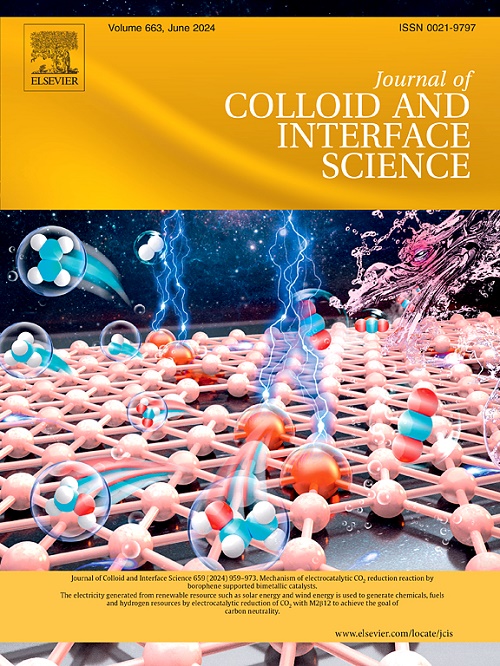Cobalt nanoparticles embedded hollow phosphorus and nitrogen co-doped carbon nanocages accelerate polysulfides conversion for lithium-sulfur batteries
IF 9.4
1区 化学
Q1 CHEMISTRY, PHYSICAL
引用次数: 0
Abstract
Lithium-sulfur (Li-S) batteries suffer from sluggish redox reaction kinetics and inevitable shuttle effect of lithium polysulfides (LiPSs), which severely impede their commercial application. Herein, the porous P, N-doped carbon nanocages with uniformly embedded Co nanoparticles (Co@PNC) are well-designed to serve as an effective host catalyst for Li-S batteries. Doped P-atoms can effectively regulate the electronic metal-support interaction between Co nanoparticles and N-doped carbon frameworks, which modifies the energy band structure and induces more active electronic states. Co@PNC can simultaneously provide strong adsorption capacity and high catalytic conversion efficiency of LiPSs, as well as accelerate Li2S nucleation/decomposition kinetics during the charge and discharge processes. Consequently, the assembled Li-S battery achieves superior rate capability and stable cycle performance with a capacity decay of only 0.033 % per cycle over 1000 cycles. Notably, Co@PNC/S electrodes deliver a high specific capacity of 766.8 mAh g-1 after 100 cycles even under high sulfur loading of 4.46 mg cm-2 and poor electrolytes.

嵌入中空磷氮共掺杂碳纳米笼的钴纳米粒子可加速锂硫电池的多硫化物转换
本文章由计算机程序翻译,如有差异,请以英文原文为准。
求助全文
约1分钟内获得全文
求助全文
来源期刊
CiteScore
16.10
自引率
7.10%
发文量
2568
审稿时长
2 months
期刊介绍:
The Journal of Colloid and Interface Science publishes original research findings on the fundamental principles of colloid and interface science, as well as innovative applications in various fields. The criteria for publication include impact, quality, novelty, and originality.
Emphasis:
The journal emphasizes fundamental scientific innovation within the following categories:
A.Colloidal Materials and Nanomaterials
B.Soft Colloidal and Self-Assembly Systems
C.Adsorption, Catalysis, and Electrochemistry
D.Interfacial Processes, Capillarity, and Wetting
E.Biomaterials and Nanomedicine
F.Energy Conversion and Storage, and Environmental Technologies

 求助内容:
求助内容: 应助结果提醒方式:
应助结果提醒方式:


